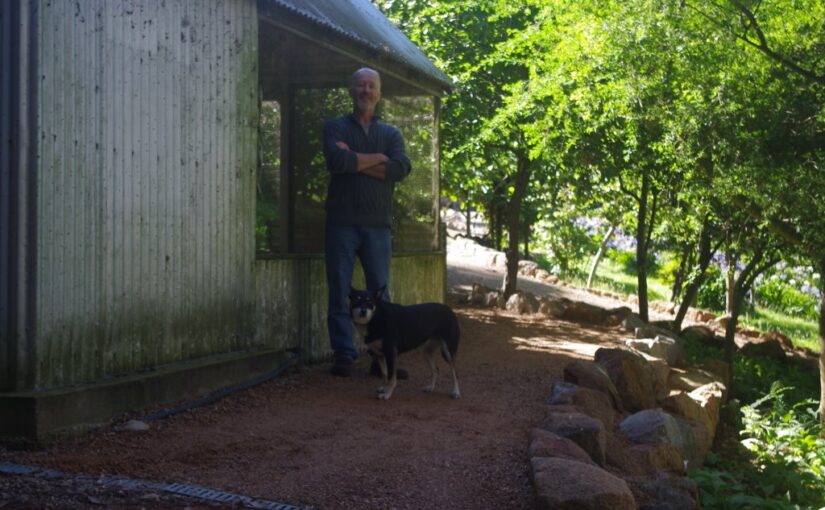When you get to a cross road, it’s best to slow down and take stock of the situation. On Saturday, we headed to a nearby town to sample the wares of a local bakery. The search for the very best bakery products sure takes a lot of work. There are no shops or stores in this remote mountain hamlet, so if you want to purchase anything, that involves heading off the mountain range. And Saturday, bakery products were calling their siren song.
All the roads around here have dirt for the surface. The recent years of wet weather has left many of them with potholes, although truthfully, they’re not that bad. Regardless, to get to the nearby town, we took the back road which leads north and east off the mountain range, and then out of the forest. It’s quite rural and the journey takes you past large rural blocks. Some people run cattle, some horses, and others nothing but grass. The land is easy on the eye.
Eventually the dirt road comes to a cross road. Sandra mentioned to slow down, just in case. I’d already backed off the throttle in the Dirt Rat Suzuki Jimny. All the same, the warning was good advice. At the cross road, a white Toyota Hilux bonnet could be seen edging just past the stop sign trying to get a better look at the traffic. The Hilux then shot across the road. It pays to slow down when faced with uncertainty.
Onward past the normally quiet country intersection, continuing along the dirt road. More cows, more horses, and even more grass. Eventually we arrived at a busy asphalt road. There’s a bit more traffic, and it’s moving fast. Turn left, and after a further five minutes of driving, we’re looking for a car park near to the bakery. Bizarrely, it was like the zombie apocalypse had occurred, the town was quiet. Plenty of street parking (there’s no other to be had). Ducked into the empty bakery, and nabbed a couple of sausage rolls and a lamington for later.
So, how did the continuing best bakery product search rate this time around? Well, ambience comes into the equation, and the morning was beautiful cool sunny summers day. We sat on a park bench and enjoyed the small town life passing by. A tiny packet of tomato sauce was squeezed onto the sausage rolls. Grins all around.
Why was the town quiet though? Oh, that’s right. It was the Australia Day long weekend, and the day before had been a public holiday. People were clearly elsewhere on Saturday, and just saying, they were missing out on most excellent sausage rolls.
As someone who is self employed running their own small business, public holidays are rather meaningless. If I don’t work, I don’t get paid. However, the Australia Day long weekend has slightly more meaning to me than other public holidays. It’s the weekend when the national youth music broadcaster runs their listener countdown on the best 200 songs of last year. Millions of collated votes might not sound like a lot, until you realise how small the population is on this continent.
The countdown runs over two days, and long term readers will know I take my music equipment seriously. The 30+ year old electronics were even refurbished during the past couple of years. It’s a hobby. The first day, the venerable Yamaha T-80 FM tuner worked perfectly. It’s not the best FM tuner ever made, but it’s right up there in terms of quality. And people chuck this stuff out, or sell the devices for peanuts. It’s utterly bonkers that the devices have little to no value. Sadly however, on the second day, the old work horse needed a bit of time out for further repairs. I swapped over to the plan B slightly lesser Kenwood FM tuner, and the music just banged on.
The incident started me thinking about how long will any of the amazing stuff that our society manufacturers will last. Probably not long at all if my experiences provide a useful guide. On this note, we replaced the clutch in the Dirt Mouse Suzuki Swift about two weeks ago. The vehicle is five years old now, and we don’t drive the thing hard. It was a surprise to us that the mechanism was failing. The mechanic showed me the old clutch plate he’d removed, and sure enough, it was worn down almost to the rivets. And to my eye the component looked slightly wonky, which is the technical term for ‘not completely flat’. The mechanic and I had a candid conversation about the subject of machine longevity, and I was not reassured by his frank assessment. He said that the Japanese built car was pretty good, all things considered. He then proceeded to suggest that things could be far worse with other manufacturers based on in his experience.
Maybe my expectations are too high? After all, from my perspective machines and systems have to work. Other people have some funny ideas about such matters. A few days ago there was an article in the news which made the claim that: ‘For a few hours on New Year’s Eve, South Australia was powered entirely by rooftop solar panels.’ You can read the article here if you’re so inclined: Booming renewable energy generation halves wholesale power prices across national grid
That’s nice, but it’s hard to really know what is meant by the highly technical term ‘a few hours’. And I won’t even go into the economic and/or technical issues surrounding grid frequency posed by that all solar outcome, or that the hours were during the holiday period. However, having a generous disposition, I’ll ignore those technicalities and instead pretend the article referred to at least four hours. Well what about the other twenty hours that day then? If the Dirt Mouse Suzuki Swift was only able to be used around midday in the summer months on cloud free days when the sun was shining, I wouldn’t call that a working system. Most peoples actual expectations are that electricity is available twenty four hours a day, even the people who write articles in newspapers.
Most of my paid work is reliant on a constant electricity supply. I presume many people enjoy a warm fuzzy feeling when reading articles such as the one I linked to above. On the other hand, I’m left with impression that the sort of future being sought is based on abstract notions, and not really grounded in technical and economic feasibility. And like the reaction to the car we met at the cross roads, I’ve recently taken a moment of pause for reflection. I’m left wondering whether more time and effort needs to be chucked into completing some of the projects around here.
It’s been another cool summers week, and there was even a brief storm (again). The very wet summer has meant that there is a lot of water in the area. Ordinarily we wouldn’t expect to see fog in summer, but this year is different.

Other than the day of the storm, the sun has shone without extreme temperatures. There are a couple of projects going on at the moment, one of which is excavating a flat site for a new and much larger firewood shed. Regular readers will recall that we almost ran out of dry firewood last year, and the year before. The health subject which dare not be named, has altered some of our work arrangements, so we use more firewood. Excavations continued this week, and a lot of soil was dug and hauled away.

The work is done by hand, using tools such as an electric (solar powered) jackhammer. It’s slow going, but I enjoy the work. All the soil was loaded by shovel into a power wheelbarrow where it was hauled away and used as fill on the low gradient path on the downhill side of the chicken enclosure.
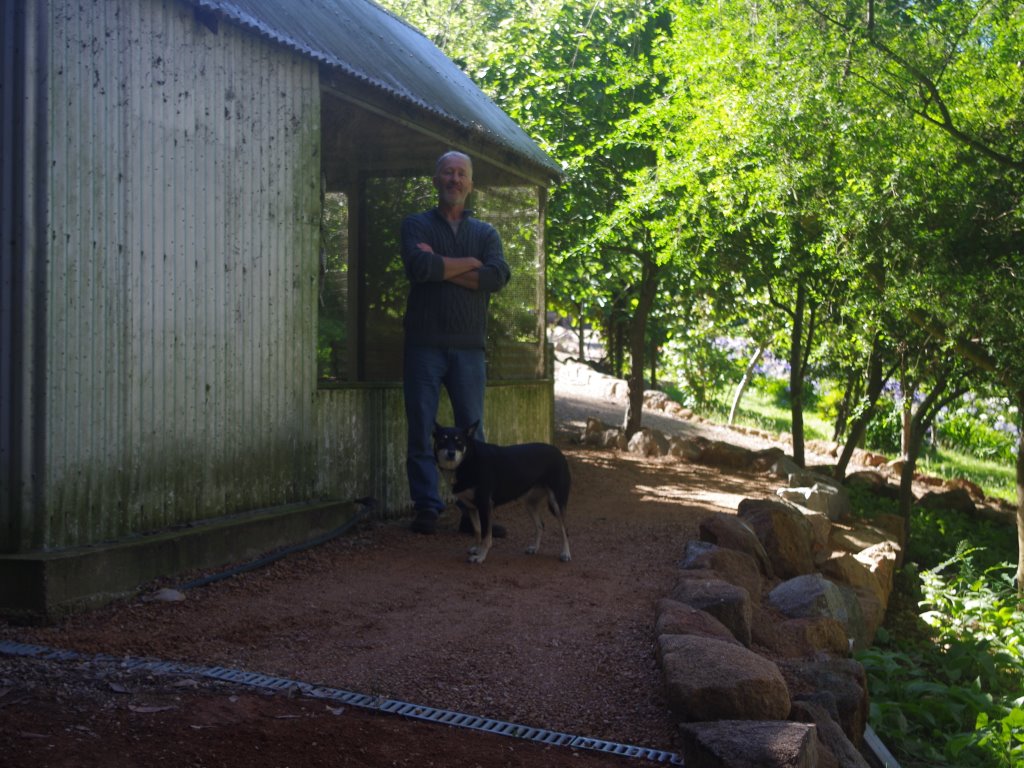
The section of path you can see in the image above is now complete. It even has a good surface layer of crushed rock with lime, and feels very solid. You can get an idea as to how much soil was moved there by looking at the height of the rocks in the rock wall. Doing the work slowly means that with each load of soil dumped, you’re compacting the soil below. By the end of the work, the surface is naturally solid with no need for further compacting.
Long term readers will recall that we’d used a lot of old left over materials to create a very large (600m2 / 6,500ft2) new vegetable and citrus enclosure. Citrus trees don’t really grow tall enough to escape the vandalism of the wallabies. Those marsupials are smaller lone forest dwelling kangaroos with a penchant for breaking fruit trees. In the fenced enclosure the citrus trees will be protected. Also a bit under half of the enclosure has been set aside for future rows of vegetables. The idea is to be able to relocate vegetable rows easily as and when needed, and then leave other areas fallow. For many years I’ve been attempting to avoid the realities of crop rotation, and it is possible to do, but economically it is easier to leave areas fallow so that the soil recovers.
This week we finished wiring up all of the fencing, and it was a day long job. The sun was fierce, but at least the air temperature wasn’t too hot.
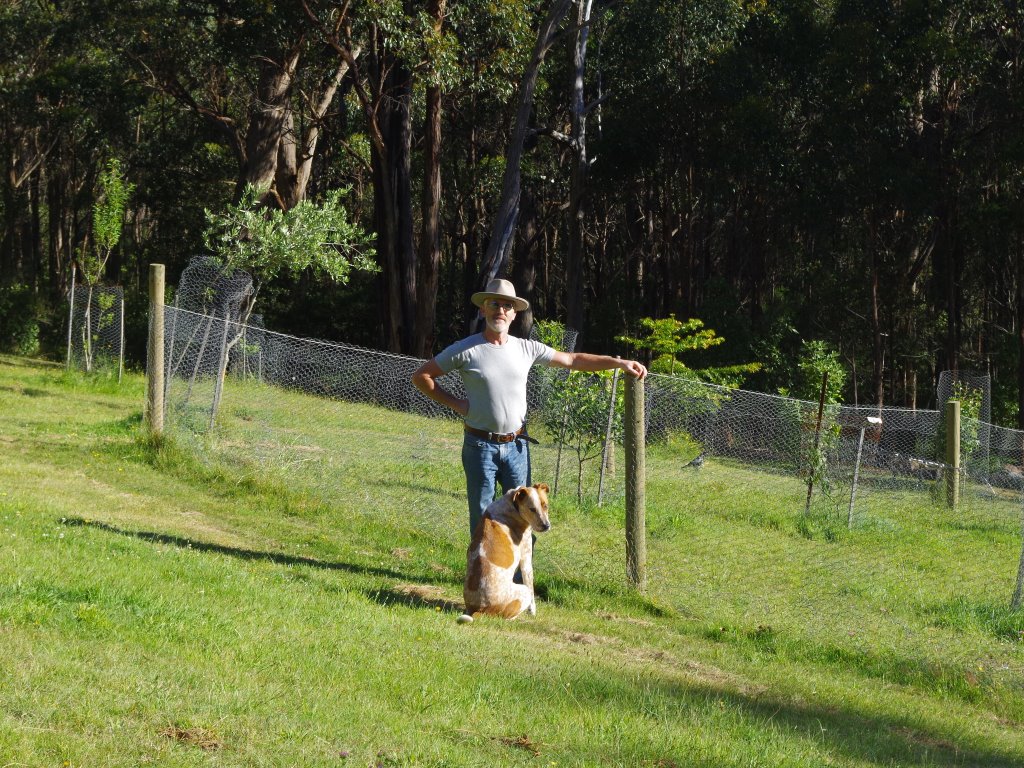

The European Pears are slowly ripening on the trees. We grow a number of different variety of pears.
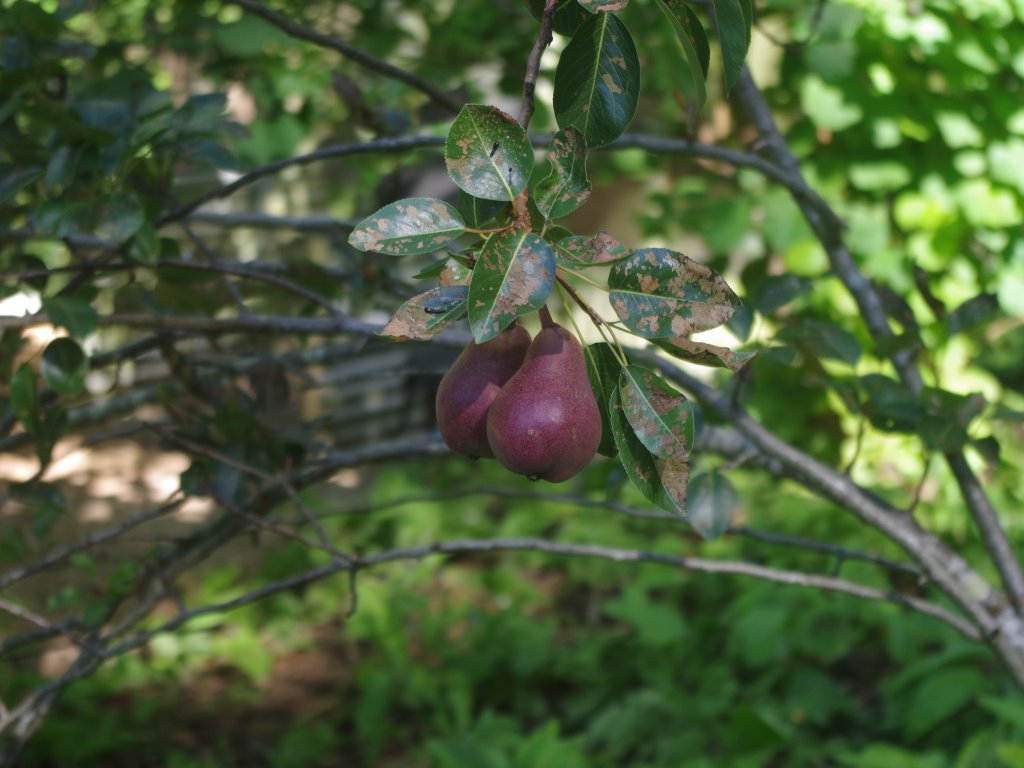
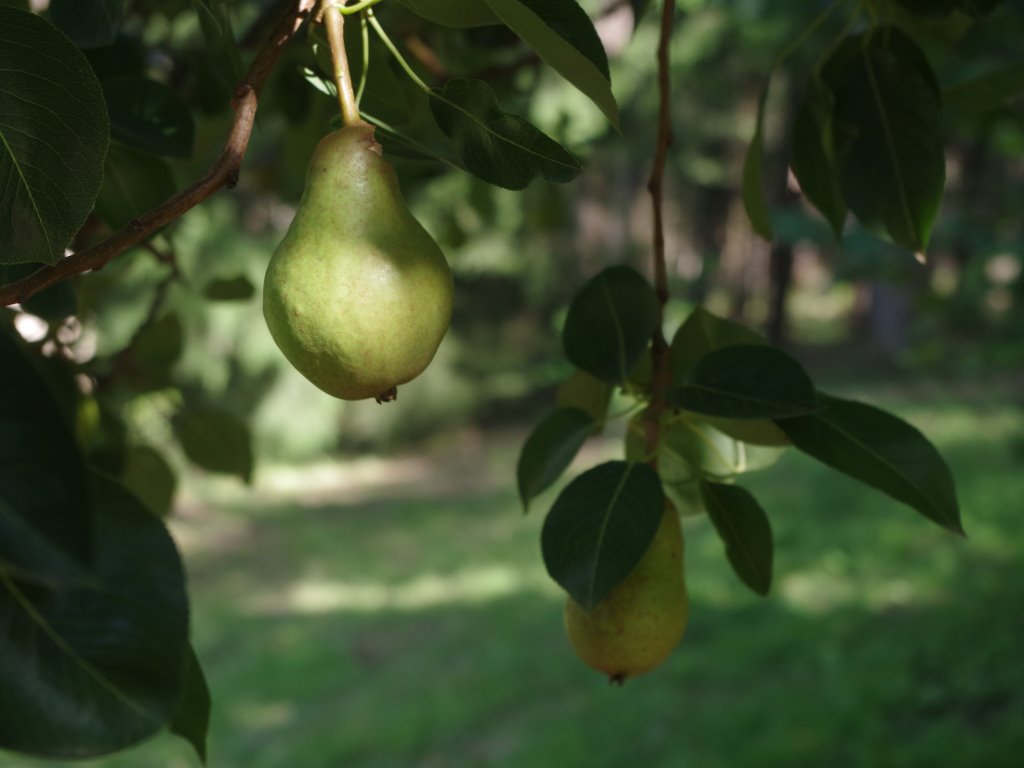
We seem to have had a good year for grapes. The vines are in their fifth year now and are enjoying the conditions this growing season.
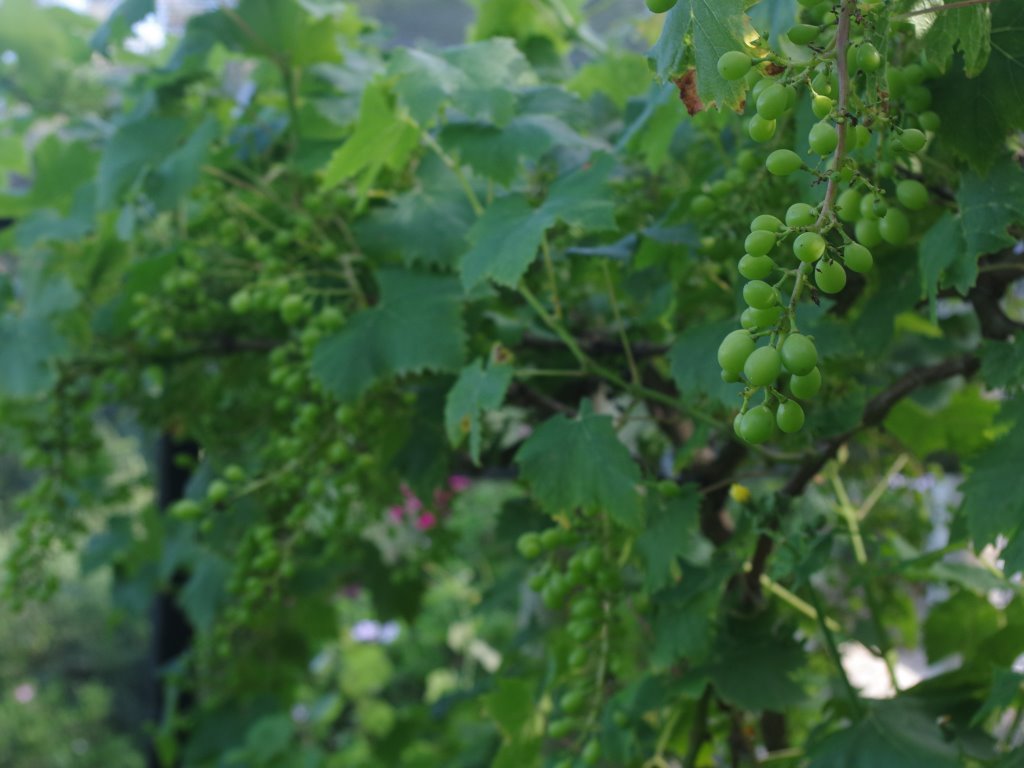
The round raised vegetable beds are producing quite a lot of leafy greens for the kitchen as well as flowers for the insects.

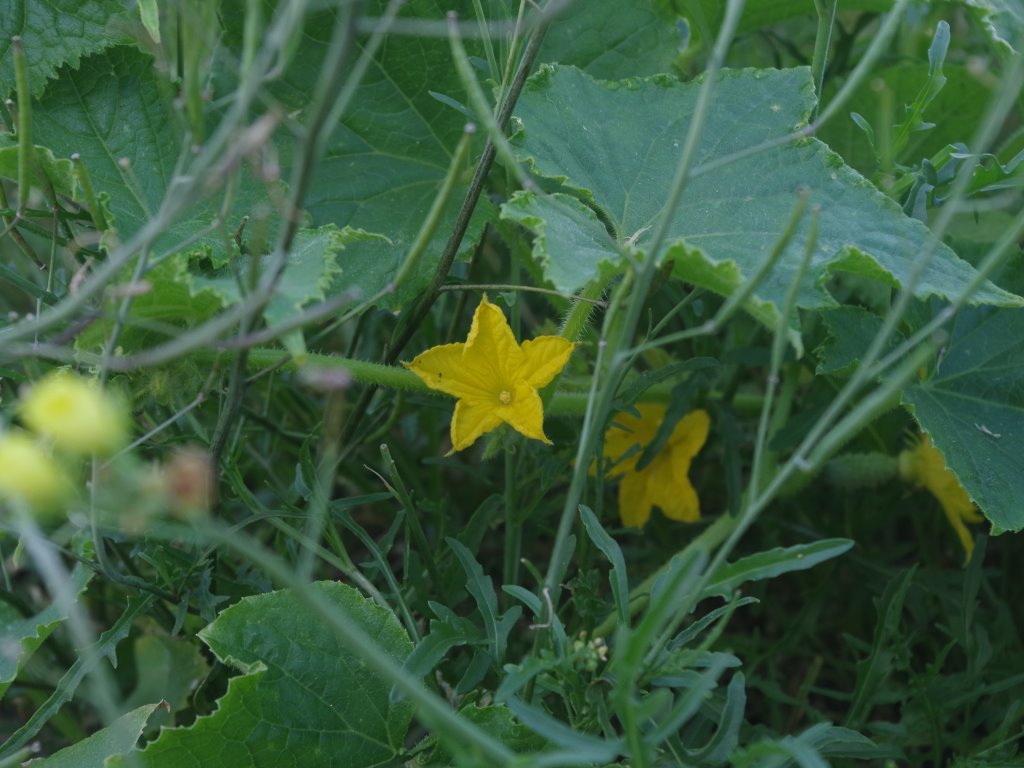
Onto the flowers:
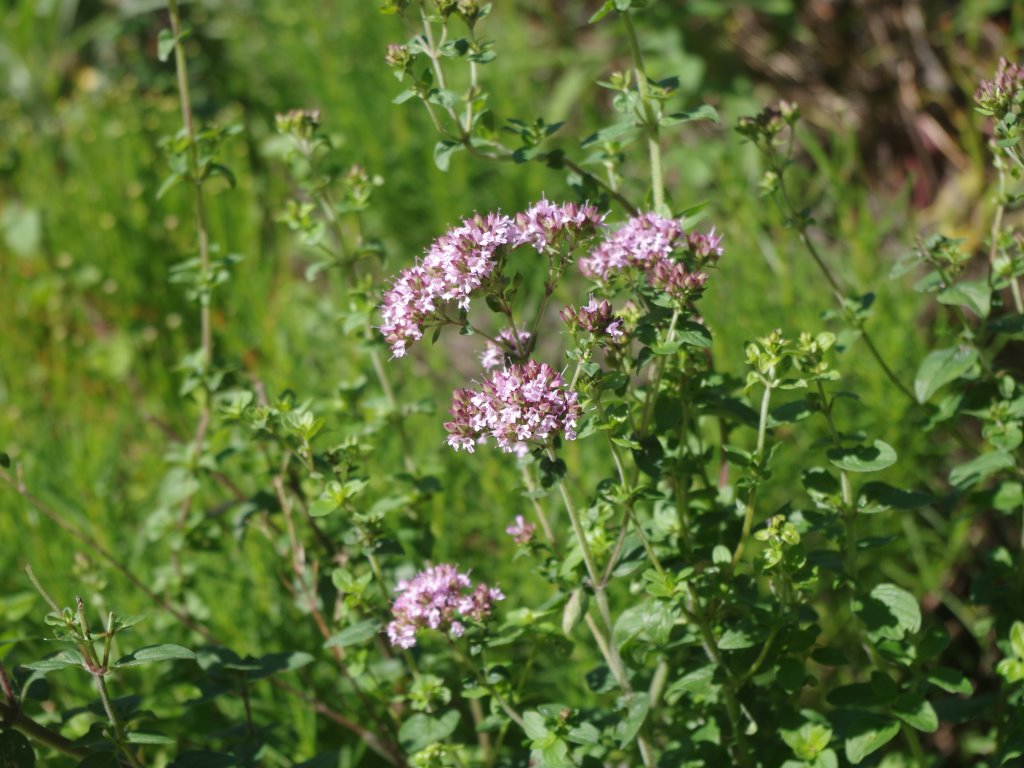
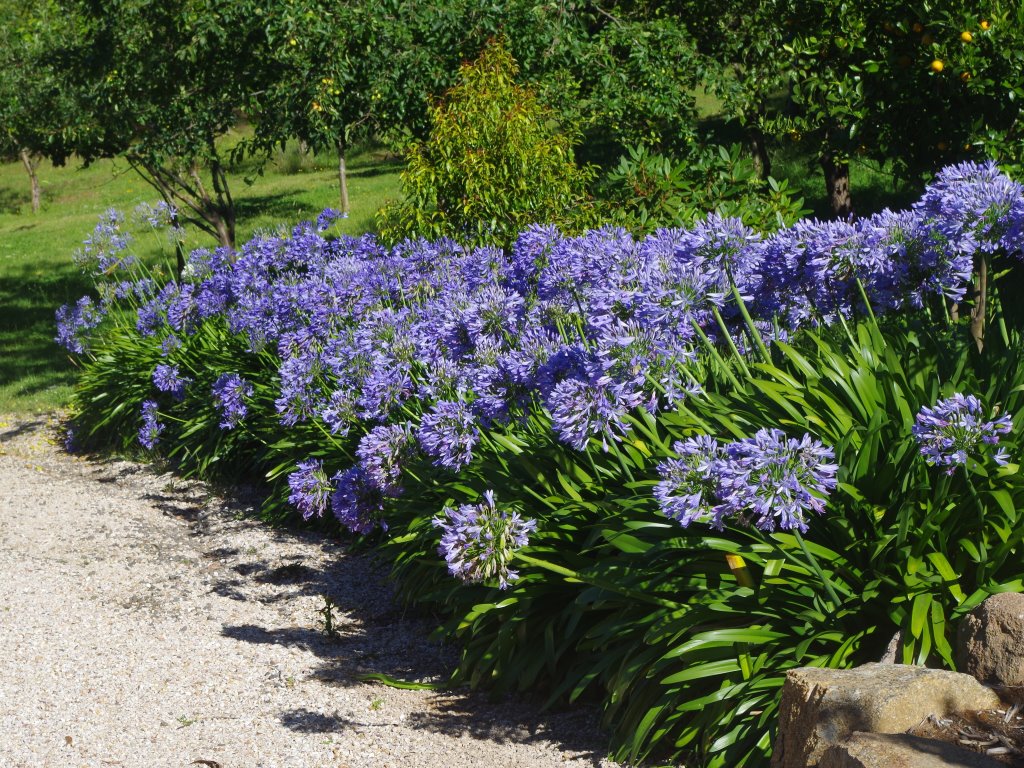


The temperature outside now at about 9am is 17’C (63’F). So far for last year there has been 192.6mm (7.6 inches) which is up from last weeks total of 174.6mm (6.9 inches)
